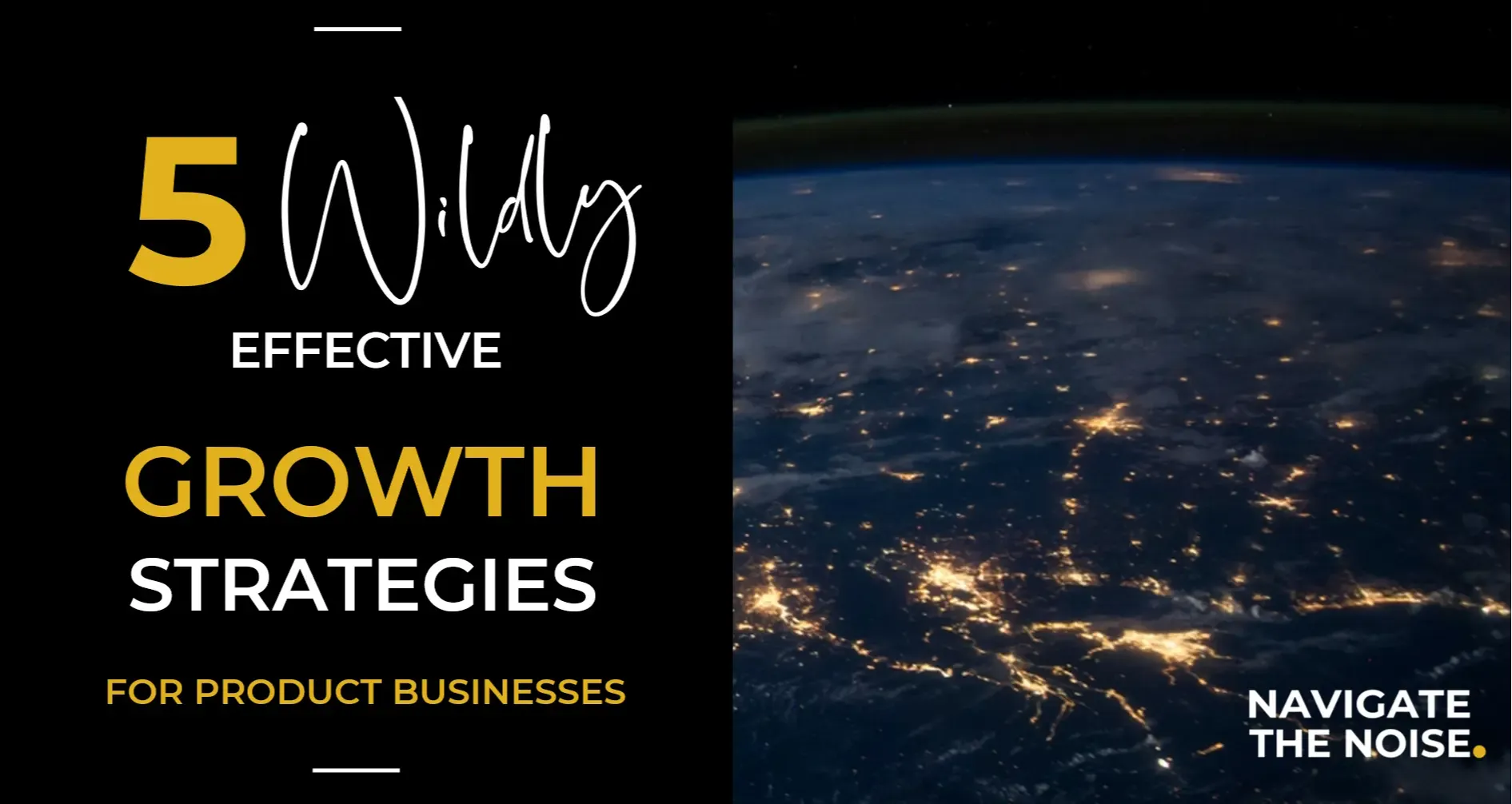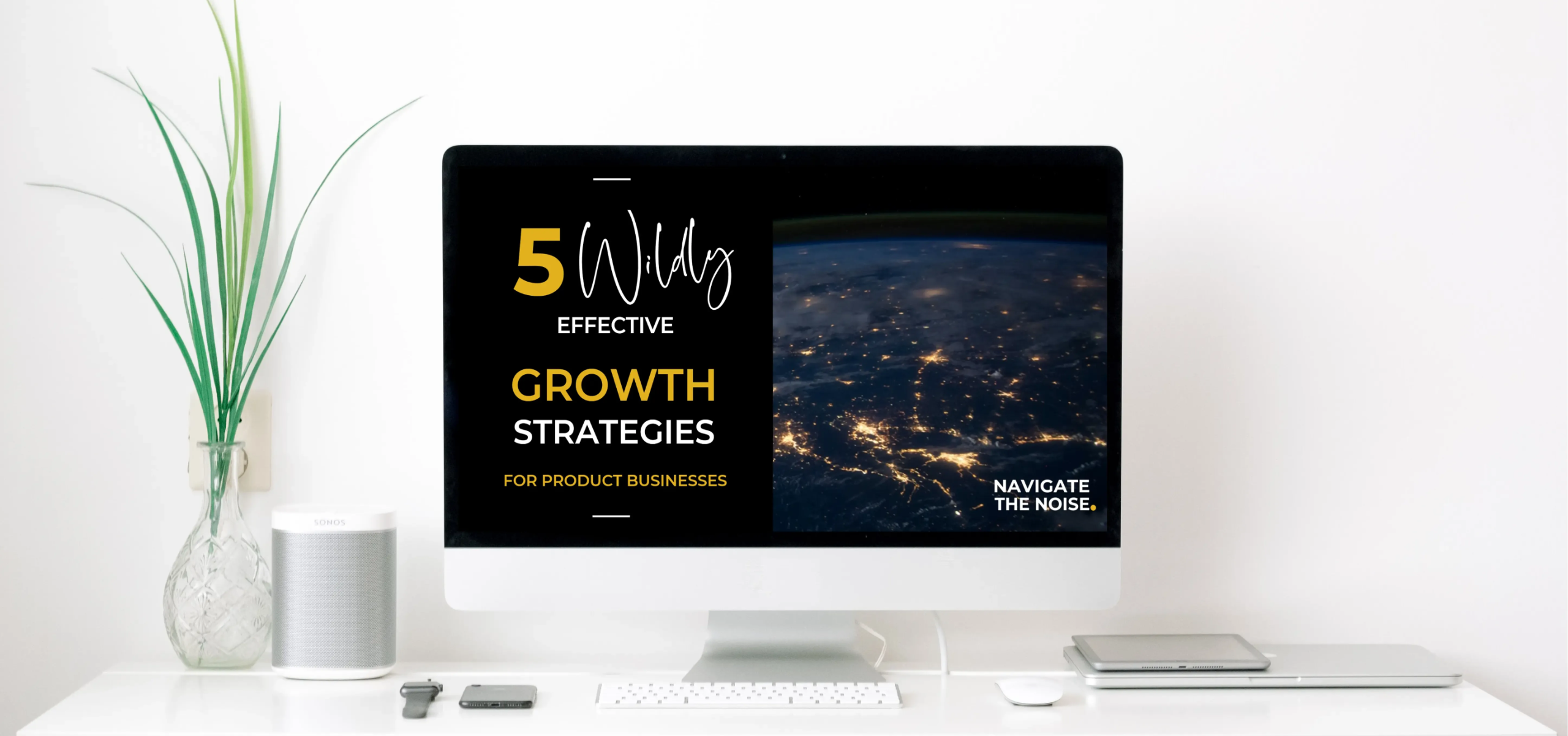The 5 Simple Ecommerce Metrics You Should Be Tracking
Ecommerce is one of the fastest-changing sales channels there are and it looks vastly different to even just five years ago. As a business coach and board level advisor, I see a growing number of small to medium ecommerce businesses struggling to make their ecommerce work, probably owing to the fact that it has never been easier to set up an online shop and sell... but clients often misjudge what is really involved to make it profitable.
To grow an ecommerce business, it is not as simple as putting your product images onto a platform and publishing them, depsite what many "guru's" may tell you. There's alot more to it than that. And often it's as much technical and data as it is fabulous, creative brand marketing.
So where do you start if you want to assess if your ecommerce is working for you? I like to take a temperature check and begin by looking at some hard measures. If you are a newbie to it all, here are the five simple metrics you should be tracking for your ecommerce business…
1. No. of unique Website Visitors in a month
It's a simple one but important to know where you are! So know this number for your business and track it monthly as a minimum.
You can find out this metric for your product-based business either in your ecommerce software (for example in Shopify under Analytics) or by using Google Analytics. You can also read my blog post Google Analytics 101 For Product Business Owners. If you don't have this set up for your product based business, I recommend you go do that right now.
2. Sales Conversion Rate %
It’s fantastic to see how many people are browsing your site but we must remember the goal in hand: sales, and if browsing isn’t turning into sales, there may be something very wrong with your customer journey and / or product offer in your store.
Your Conversion rate metric tells you what % of your website visitors convert into hard sales. It's the way you can check are you driving potential buyers to your website or completely the wrong type of traffic.
Google Analytics and Shopify Analytics will calculate your conversion rate for you. If you need to do this manually yourself, to calculate the eCommerce conversion rate simply divide the number of ecommerce sales by the number of website users and then multiply that answer by 100%.
Ecommerce conversion rate formula:
(The number of sales conversions / the total number of visitors) x 100 = %
For example, if your ecommerce site receives 200 visitors in a month and has 50 sales in that month, the conversion rate would be 50 divided by 200, or 25%.
The higher the conversion rate, the better – but keep in mind that even the larger brands can experience a conversion rate on their own website of between 2 and 5%.
Your conversion rates can fluctuate due to lots of different variables. If you’re running a flash sale on the weekend, for example, you might see an uplift. If you start driving the wrong type of traffic to your site, people who are not buyers, then your conversion rate will drop as you "dilute" your equation.
If you are converting consistently over 15% just know that you are flying!
3. Website Traffic Forecast KPI
Once you know how many people are using your site and the sale conversion rate, it can help you to start visualising the sales you could be achieving if you doubled or tripled your website traffic. We do this by creating and playing with scenarios - or forecasts.
Start by checking your website traffic in the back-end analytics of your site or on google analytics to establish your baseline - where you are today (per step 1 above).
Then create a goal, or Key Performance Indicator (KPI) for the number of visitor you want to aim for. Perhaps a 20% increase over the next 90 Days? maybe 50%? Or perhaps you want to reach 10,000 visitors per month by the end of the year. Be as bold and ambitious as you like.
Then back it up with a plan for how to drive more traffic to your ecommerce website. For example, this might include running an SEO check to see if there are any technical or page speed errors than can be corrected to optimise your website. You can also increase your website traffic by creating amazing content to attract organic visitors and by using social media, or advertising your site. You will need to take action.
The point of having a Traffic forecast KPI metric in place is that it paints a picture of what might be possible - it helps you stay focused and track your progress against that goal.
4. Average Order Value (AOV)
Every ecommerce business wants their customers to spend as much as possible but for finance and business growth plans, you need to know and track your average order value.
Work this out by dividing the total sales by the number of orders taken in any given period.
Average Order Value Formula (AOV):
(Total Sales / Total number of orders) = $AOV
For example, in September, your ecommerce sales were $31,000 and you had a total of 1,000 orders. $31,000 divided by 1,000 = $31, so September's monthly AOV is $31.
You can increase this metric by up selling and cross selling accessories or complimentary purchase suggestions as your users progress through your website and even at the cart page, offering gift wrap, package deals or free shipping over a certain minimum spend amount.
5. Customer Lifetime Value
Holding on to a customer, retaining them within your brand universe and getting them to re-purchase is key to ecommerce success.
As entrepreneurs we can all get a customer to buy once, but can you get that customer to come back time and time again? If you can unlock this, then your business will start to scale in dramatic ways.
Of course, some product ranges are one-time-deals, which is fine if you’re priced accordingly, you're getting enough traffic and attracting new customers.
However, for most product-based businesses, there is always more we can offer our customers, especially if you are selling stock with a recurring use or a replacement need at some point in the future.
Customer Lifetime Value (LTV) Formula:
(Customer Value x Average Customer Lifespan) = Customer Lifetime Value
To calculate Customer Value part of this formula simply look at:
- Your Average Order Value metric for your site
- How many times a customer typically comes back to your store each year (Repeats).
So Customer Value = Average Order Value * Average Number of Purchases in the year
This is how much each customer is worth to you, each year, in terms of value.
For example if you have an AOV of $25 and a customer buys from your store 4 times a year, then each of your customers is valued at $100.
You may also want to consider how much it costs you to serve that customer and their purchases and reduce that "value" accordingly, so it reflects more of a customer "profit" figure. I personally prefer this measure.
Once you know your Customer Value to expand this data so it becomes a Customer Lifetime Value metric you simply multiply your Customer Value by the number of years you can reasonably expect your customer to stay with you.
Subscriptions and reminding users it’s time to buy again can help increase your customer lifetime sales metric.
Make It Happen In Your Business
Setting yourself a few simple Ecommerce Metrics will empower you to improve your ecommerce business and focus on business growth. This is why they are so vital. With the right performance metrics, you can start taking action on the right things, the things that matter to improving overall results.
Next Steps:
- Reflect on whether you proactively measure these 5 Simple ecommerce metrics today in your business and if not, why not?
- Set up Google Analytics if you haven't done so already.
- Collect the data you need to calculate these metrics for the most recent month in your business - where are you today? Are there any surprises?
- Keep a log of your 5 simple metrics in a spreadsheet so you can start tracking these and recording these each month.
- Every month, for each metric, consider what ACTION you need to take. What are the metrics telling you and what do you then need to go do about it?
- Setting ecommerce metrics and goals for growing your business is something we cover in detail during our Strategy workshop sessions with our clients. If you are interested in finding out more about this goal setting and planning work, please feel free to schedule a call with us to find out more.
Grab Your Free Guide:
5 Wildly Effective Growth Strategies
This guide will walk you through our proven steps to get your product selling, creating a global footprint for your brand.
We hate SPAM. We will never sell your information, for any reason. You can unsubscribe at any time.






